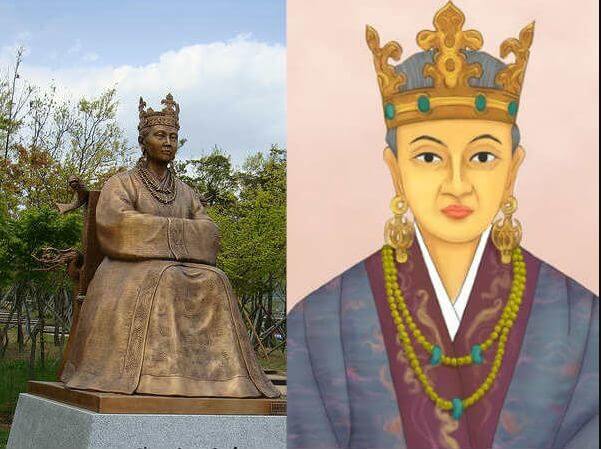Ayodhya & South Korean Connection
Even as the country and world is gearing up for the upcoming start of construction of ram Mandir at the birth place of Lord Ram – Ayodhya, here is an interesting piece of history that will keep you wondering. Did you know that there is an unprecedented connection between Ayodhya and South Korea? Yes you have heard it right… South Korea has got an inseparable bond with the city where Lord Ram was born and that link is still in vougue!

There is lot of mythical and spiritual connection between the nations in South Asia and this is established by the traditions and rituals that are common to different regions. But did you know that India shares an ancient and interesting bond with Korea? Hundreds of South Koreans visit Ayodhya to pay homage to their ancestor!!

The Link
Ayodhya has a deep and centuries-old connect with South Korea. But, it was discovered in 2000-01, when the Atal Bihari Vajpayee government was in power that a princess from Ayodhya, the birthplace of Lord Ram, had become a queen of South Korea and started ruling a dynasty there some 2,000 years ago.
The lineage is known as Karak dynasty in the history of South Korea. The dynasty was based in Kimhae, a town located near Pusan renamed as Busan, the second-most populous city after the capital Seoul in South Korea. The name of the princess of Ayodhya is mostly known by South Korean sources, where she is named as Heo Hwang-ok. Her original Indian name is believed to have been Suriratna. A large number of Koreans trace their ancestry to the legendary Queen Queen Suriratna (Heo Hwang-ok) who went from Ayodhya to Korea some 2000 years ago.

The Ayodhya connection of South Korea gained currency at the turn of the 21st century. Kimhae mayor led a delegation to Ayodhya in February 2000. The delegation claimed that Karak dynasty queen Huh Hwang-ok (also spelt as Heo Hwang-ok), married to the ruling lineage founder Kim Suro, was born in Ayodhya.
The Legend
Korean legend states that the princess of Ayodhya named Heo Hwang-ok, also known as Suriratna, went all the way to Korea some 2000 years ago to marry King Suro of Geumgwan Gaya. Together, they both are heralded as the ancestors of more than two-thirds of Koreans today.
Heo Hwang-ok is worshipped as the most blessed queen ever to have set foot on Korea. Her offspring rose to prominence and unified Korea, and distinguished luminaries of the day still trace their lineage to her.
Even though historically debatable, enough legends have surfaced around this event to peep the interests of world media. Ancient Korean text Samguk Yusa chronicles King Suro’s wife to have been a princess of a distant kingdom called Ayuta, which people relate to be the holy city of present-day Ayodhya. Also, the twin fish royal family symbol of Gaya Kingdom is deemed to be the symbol of ancient Hindu families of Ayodhya. The descendants of Queen Heo Hwang-ok and King Kim Suro, brought various kingdoms of Korea together and gave birth to the famous Karak dynasty, which is the ancient house that gave Korea some of its best and illustrious citizens. Some of the members of the erstwhile dynasty are said to have possessed the stones which the princess carried with her as god’s blessing during the long and perilous sea journey. It is believed that the queen died at the age of 157.

According to another version of the legend, Ayodhyan princess Suriratna travelled to South Korea when she was 16. She was sent to Korea by her father, the king of Ayodhya who received a divine command in his dream to do so. Suriratna undertook the voyage accompanied by her brother, a prince of Ayodhya.
This incident, Korean researchers, claimed to have taken place in 48 AD. She was received by King Kim-Suro upon arrival. The two married and founded the Karak dynasty. The king was so fond of her that he built a temple at the place where they met first.
Suriratna’s story is described in ancient Korean text, Samgyuk Yusa – also known as Samgyuk Saki – meaning the memoirs of three kingdoms. Suriratna or Heo Hwang-ok is said to have lived till 189 years. Upon her death, a tomb was built in Kimhae. There is a stone pagoda in front of the tomb of the queen. South Koreans believe that the pagoda has the stone which she had carried from Ayodhya in her boat.
The Present
It is said presently there are more than 60 lakh people in South Korea who claim their ancestry to the princess of Ayodhya. These are the people known as Kim and Huh communities in South Korea. It is proposed to develop Ayodhya as a sister city of Kimhae. It has been planned to set up a memorial for Queen Huh Hwang-ok. In March 2001, the mayors of Ayodhya and Kimhae signed a Sister City Bond in March 2001.

A memorial was later built at the bank of Saryu in Ayodhya in the honour of the local princess Suriratna or Korean Queen Heo Hwang-ok. Hundreds of South Korean tourists make it a point to visit the memorial in Ayodhya during their visit to India!
@religionworldin
[video_ads]
[video_ads2]









